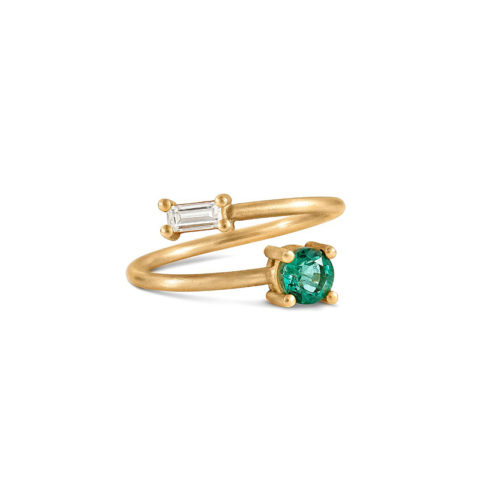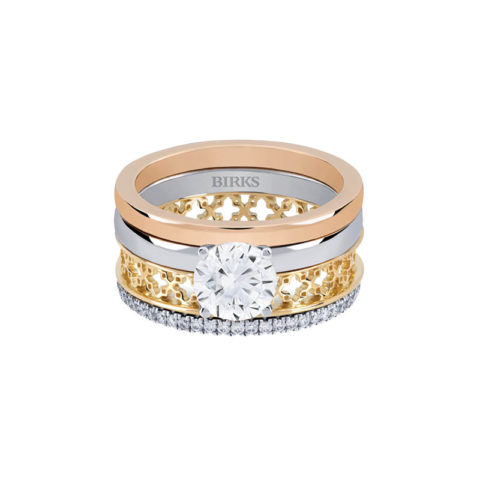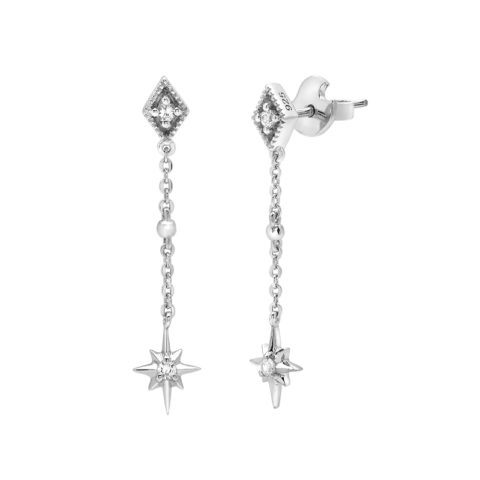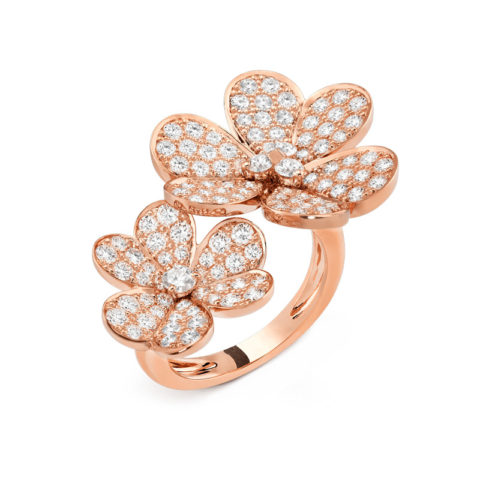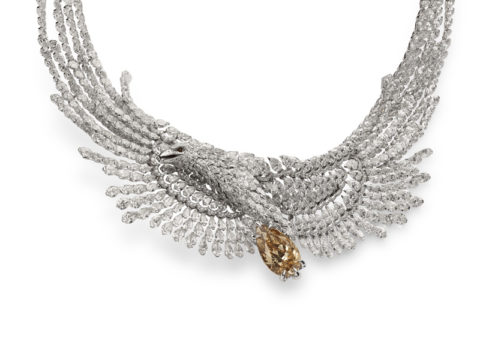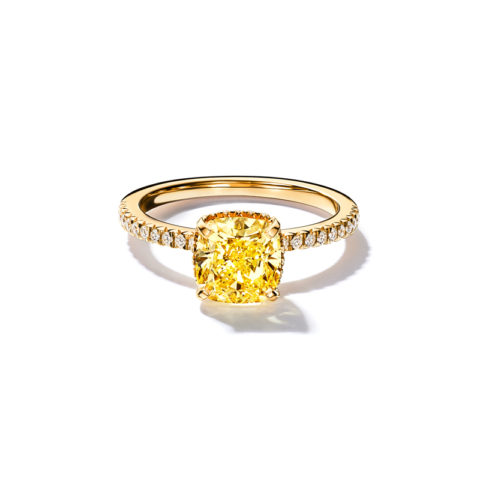August 16, 2021 at 04:18PM
In fashion, ethical has become essential. We’ve seen this clearly with clothes, where sustainability and recycling, if not industry norms, are being viewed by more and more consumers as crucial features that bring added value. But what about jewellery?
In fact, well before the mainstream fashion world was waking up to the ethical issues associated with making clothing, the jewellery world was addressing some not-so-pretty problems in its own backyard: blood diamonds, for example, sold to fund wars, and gold mining, resulting in deforestation and water pollution and done by poorly paid workers (often children) subjected to some of the worst working conditions on earth.
But fear not: Not all bling is bad. You just have to choose carefully. Thankfully, retailers, watchdog organizations and the big providers themselves are making this easier for us by putting protocols for guilt-free gold and responsibly sourced gems in place.
Border-free initiatives
Among the most important of the “clear conscience” initiatives is the Kimberley Process — a multi-stakeholder effort to eliminate trade in conflict diamonds by improving international co-operation, transparency and oversight. It is now the industry standard and followed by most reputable jewellers including Cartier, Tiffany & Co., Maison Birks, Van Cleef & Arpels, Chopard and Louis Vuitton. Equally important is the World Diamond Council’s System of Warranties (SoW) — an industry self-regulation program similar to the Kimberley Process. One key difference is that the SoW extends beyond rough diamonds to include polished diamonds and diamond jewellery, which means the warranty can be applied and passed on every time the diamond changes hands before it reaches the customer. The Chain of Custody (CoC) certification of the non-profit Responsible Jewellery Council (RJC) enables customers and suppliers to see how jewellery products and materials are sourced, traced and processed through the supply chain. Other certifications to look for when buying jewellery are those bestowed by the Swiss Better Gold Association (SBGA) system and the Fairmined and Fairtrade programs. Earthworks’s No Dirty Gold campaign puts pressure on the mining industry to minimize its environmental impact and calls on consumers to insist that this be cleaned up.
Covid has impacted gems, too
COVID-19 has put new stresses on the jewellery world. To keep the focus on responsible sourcing during the pandemic, Human Rights Watch is co-operating with key companies and suppliers to ensure that they are complying with the Organisation for Economic Co-operation and Development’s Due Diligence Guidance and other best practices. It also monitors what steps these companies are taking to minimize their environmental impact and risks from climate change.
ADVERTISEMENT
ADVERTISEMENTSports Direct Free Delivery on All Orders! |
Traceability
The important players in the jewellery game are compliant with efforts that track a diamond’s every move before it reaches the store — and they proudly say so. Many, including Bulgari, Cartier, Pandora, Signet and Tiffany & Co., have issued codes of conduct for their suppliers and made them public. Beyond that:
• The Arctic Canadian Diamond Company has a line of independently tracked diamonds called Canadamark; each stone is fully traced from the mine to its final cut and polish.
ADVERTISEMENT |
• Maison Birks, a longtime adherent of the Kimberley Process, was one of the first jewellery houses in Canada to exclusively use conflict-free, sustainably mined diamonds in its bridal collections. It has also supported a range of environmental programs, from protecting Canada’s boreal forest to urban beekeeping.
• Chopard’s gold, diamonds and coloured gemstones are all sourced from ethical mines that participate in programs like the SBGA or Fairmined and Fairtrade or are recycled from ethical suppliers such as RJC CoC-certified refineries.
• Cartier only sources gold from suppliers that are members of the RJC. Among these is a “model” mine in Honduras. Cartier purchases its entire output of gold, which is then refined in Italy at a facility solely dedicated to processing its gold.
• Van Cleef & Arpels is a certified member of the RJC and follows circular-economy concepts in its activities, avoiding more wasteful “take, make, dispose” models whenever possible.
• Tiffany & Co. has pushed to expand on the Kimberley Process requirements to include non-conflict-related abuses. All of the rough diamonds it sources are 100 per cent traceable from a known mine or a supplier with a limited number of known mines. It also has full CoC certification for newly mined gold, which it exclusively sources from only one mine: the Bingham Canyon Mine in Utah.
Examples of ethical indie jewellery brands
Sandy Leong, in collaboration with Gemfields, a worldleading ethical gemstone supplier and the owner of Fabergé, has recently launched a fine-jewellery collection featuring responsibly sourced emeralds, recycled 18 karat yellow gold and conflict-free white diamonds. As part of the Walk for Giants capsule, these pieces also help support conservation projects in Africa.
Los Angeles-based Washed Ashore uses only recycled gold and silver and post-consumer gems mainly from second-hand sources in its creations. Its packaging is fully recyclable (you’d think this would be the norm by now, but, alas, it’s not), all of its recycled metals are obtained through an RJC-certified refinery and some of its proceeds go to help its partner, CarbonFund, fight global warming. Also from Los Angeles — and a favourite among the Hollywood A-list — is Zoë Chicco, who only uses conflict-free diamonds in her eponymous collection, along with 100 per cent recycled 14 karat gold.
ADVERTISEMENT

ADVERTISEMENT
Anya Hindmarch - I AM A PLASTIC BAGOttawa artist Chayle Cook uses sustainable sources of silver and gold, fair-trade gemstones and Canadian diamonds in her handcrafted jewellery.
New York-based sisters Morgan and Jaclyn Solomon work with local artisans for Agmes, their line of handmade jewellery. Almost all of themetals they use are recycled, and any scrap metal is melted down for reuse.
Malleable Jewellers in Toronto uses ethically sourced gold and recycled precious metals and stones wherever possible in its Fairtrade-certified jewellery.
Vancouver’s Poppy Finch works primarily with recycled gold and exclusively with responsibly sourced diamonds, pearls and coloured gemstones. Each piece is handcrafted by local goldsmiths and craftspeople. Also from Vancouver is Wolf Circus, which hand-fabricates or casts “demi-fine” and “attainable” jewellery using the lost-wax casting process. Only recycled sterling silver or bronze is used, and the pieces are coated with 14 karat gold plating.
So, while all that glitters is not necessarily good and some diamonds are definitely not a girl’s best friend, it’s easy enough to find pieces that don’t have a shady past. The list of ethical and eco-friendly jewellery makers is only going to get longer as more consumers demand jewellery that not only looks great but also makes them feel good about wearing it.
Now that you’ve read up on how to shop for jewellery ethically, here are some guilt-free pieces to peruse:
The post How to Shop for Jewellery Ethically appeared first on FASHION Magazine.
Read More Fashion News
Author Clara Young | Fashion Magazine
Selected by CWC
ADVERTISEMENT
ADVERTISEMENTUp to 30% off Gift Sets |







